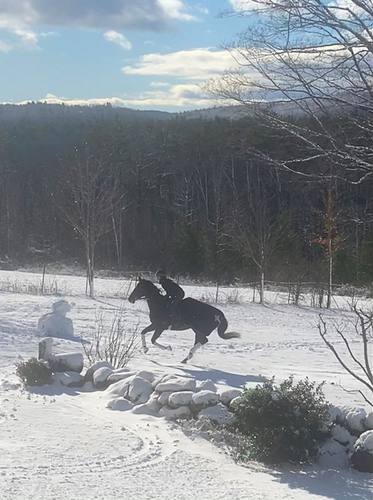Taking my TB into the woods now every day (new barn, all-day turnout, NO INDOOR) I am learning more than I ever knew about trails and footing and outdoor tack. My goal is to keep him as fit as he has been (switched to new barn 3 months ago).
My question is a bit question: for our gallops, which both he and I enjoy tremendously, he has become hard to handle. He now anticipates them too much. He trots fine, but takes LEAPS into the canter out of sheer joy. I ride him in two bits: a rubber Mullen and a rubber double-broken snaffle. We need something stronger, but his mouth is sensitive. He has a tendency to throw his head up and grab the bit when he wants to go. I want to ride with little pressure on the reins but am forced to hold him back strongly.
Might just be the wonderful trails and fields we are on and nothing can be done since he simply adores to RUN. But I do hope there is a bit out there that can get his attention without making him cranky.
Ideas? Thanks!

